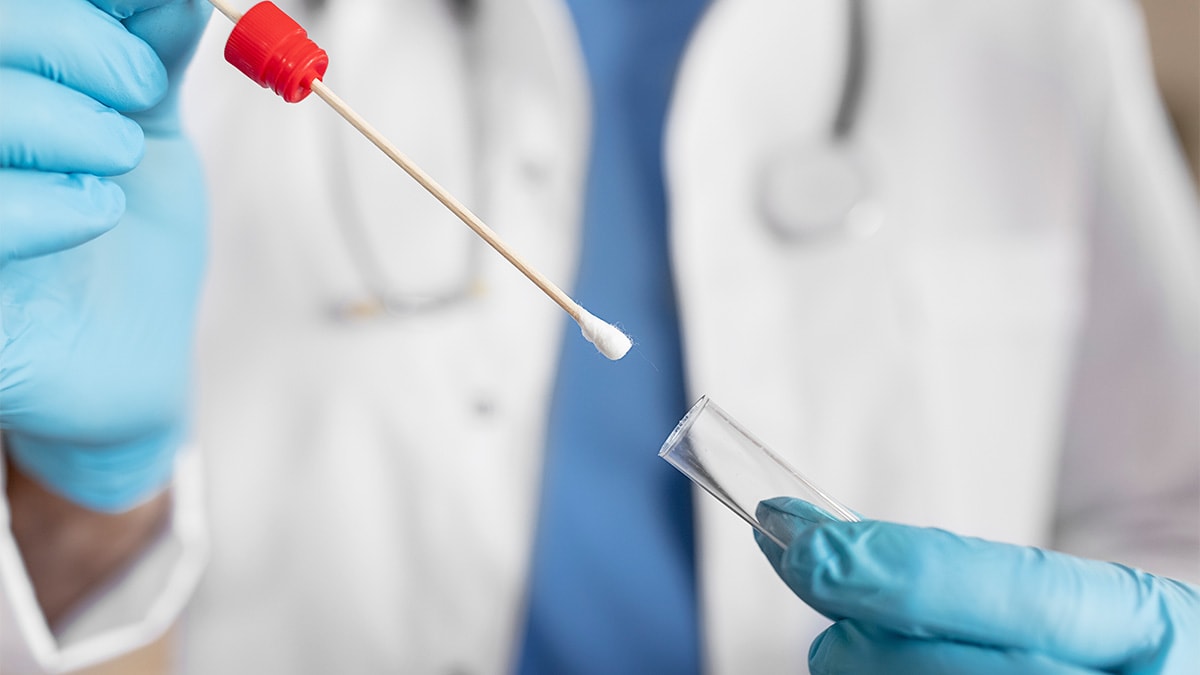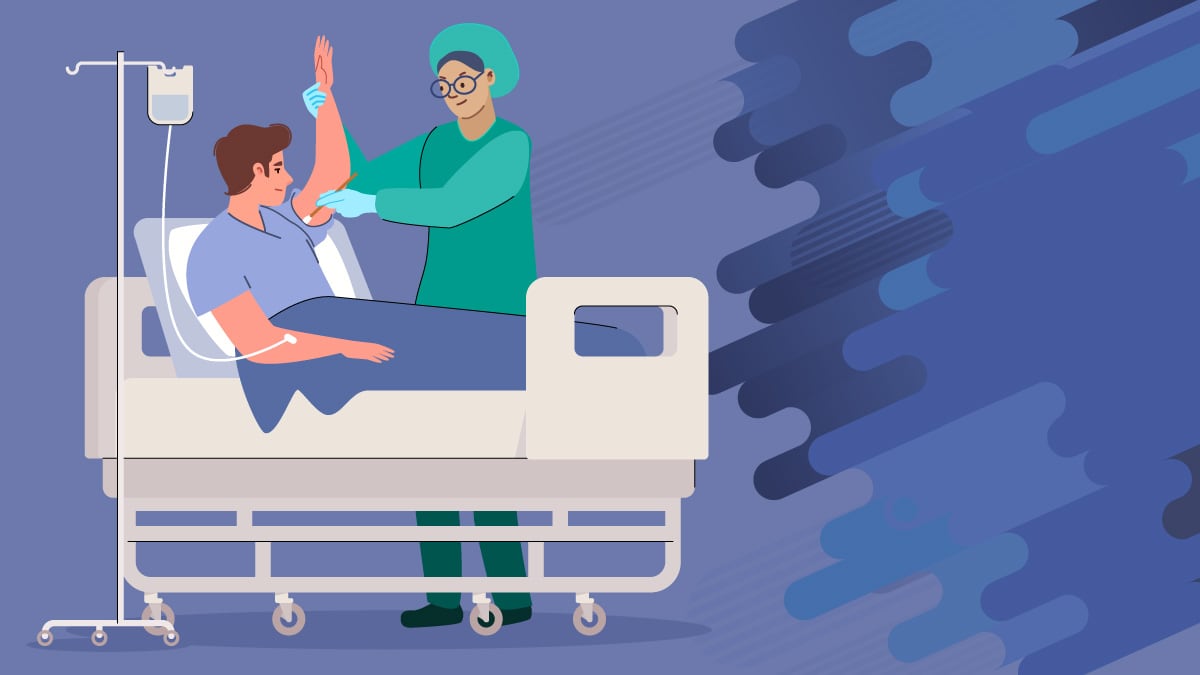Key points
- CDC recommends using a composite skin swab of the armpit and groin to screen for C. auris.
- Patient swabs are stored and transported in a test tube containing transport media.
- Screening decisions are based on factors like potential patient exposure and local epidemiology.

Use of swabs for screening
Importance
Screening patients for C. auris colonization is critical for preventing the spread of C. auris. Noninvasive skin swab collection and testing can identify patients who are colonized with C. auris.
Use a composite swab of the patient's axilla (armpit) and groin (one swab is used to swab both areas). Available data suggest that these sites are the most common and consistent sites of colonization.
C. auris has also been isolated from swabs taken from the nares, oropharynx, external ear canal, vagina, and rectum. CDC continues to explore whether swabbing of other body sites (e.g., nares, hands) would improve identification of colonized patients.
Facilities determine screening strategies based on factors including potential patient exposure and level of spread of C. auris in the area or in the facility.
Equipment and materials needed
Culture collection and transport system
Patient swabs are taken using a culture collection and transport system. One example is the Nylon-flocked swab (BD ESwab collection and transport system; Becton Dickinson and Company, Sparks, MD)[A]
Procedure for collecting swabs
- Open swab package by grasping plastic at opposite end from the soft tip. Leave swab tip enclosed in the package to prevent contamination.
- Carefully remove tube from its packaging without touching the soft tip. Use the same swab to:
- Swipe all sides of swab tip back and forth 5 times over left axilla skin surface. Target the crease where the arm meets the body. Repeat on the right.
- Swipe all sides of swab tip back and forth 5 times over left groin skin surface (inguinal crease in the skin where the leg meets the pelvic region). Repeat on the right.
- Swipe all sides of swab tip back and forth 5 times over left axilla skin surface. Target the crease where the arm meets the body. Repeat on the right.
- Remove cap from swab collection tube and place soft end of collection swab into the tube. Prevent cap from touching any materials to avoid contamination.
- Snap off end of the swab at the marked line on plastic handle by bending it against the edge of the transport media.
- Screw on tube cap, adjusting until snapped end of the swab slides into place in the center of cap.
- Follow specific product instructions for labeling, packing, and shipping specimen.
- Send or ship immediately to a testing laboratory.A

Specimens can be submitted and tested through CDC's AR Lab Network.
- This test has not been cleared or approved by the FDA. The performance characteristics have been established by CDC Mycotic Diseases Laboratory.
- Mention of a specific commercial product does not qualify as an endorsement of the product by CDC.
